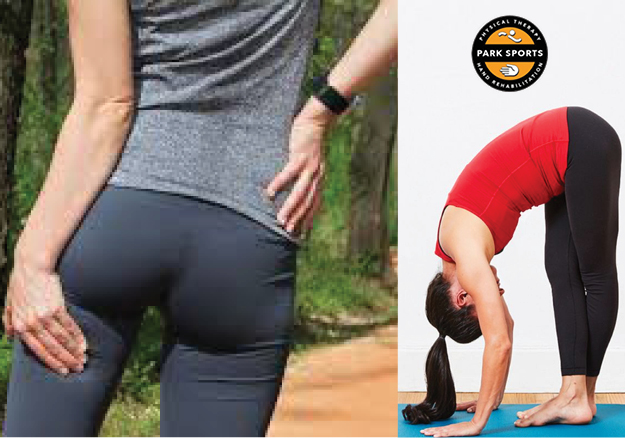Hamstring injuries can be painful and set you back weeks if not properly recognized and treated. Strain to the hamstring occurs when one or more of the three hamstring muscles or tendons (at the back of the thigh) is torn, either partially or completely. It is one of the most common injuries of the lower body. While hamstring injuries are most often associated with athletes participating in sports involving high-speed running, such as football, soccer, or track, anyone with a hamstring runs a risk of a hamstring injury. There is also great risk of hamstring re-injury. In fact, after tearing a hamstring muscle, a person is two to six times more likely to suffer a subsequent injury. In most cases, hamstring strain injuries are successfully managed with physical therapy.
“Hamstring strains are one of the most frequently occurring injuries in sport. They can be challenging and frustrating to treat because of the high recurrence rate. Hamstring strains account for 12–16% of all injuries in athletes.”
The National Center for Biotechnology Information
Symptoms of a Hamstring Injury
- Pain in the back of your thigh, either behind your knee, in the muscle belly, or near your buttock
- Difficulty fully straightening your knee without pain
- Hard to take large steps or walk quickly, or pain experienced with climbing stairs
- Discomfort with running
In most instances, there is pain associated with a hamstring injury. The range of pain can be from mild to severe. As the hamstring covers a large portion of the back of the leg, the exact location of symptoms may vary from person to person.
Causes of Injury
A hamstring injury may come on suddenly, typically as the result of a quick motion that occurs with running or cutting maneuvers while participating in sports. Occasionally, you can suffer a hamstring strain by simply moving the wrong way while getting up from a chair or while walking and running.
First steps to injury recovery
- See your doctor to be sure you get an accurate diagnosis
- Visit a physical therapist to start treating the pain and to start working on restoring your normal mobility
- Avoid aggravating activities that can cause pain or prevent normal tissue healing of your hamstring
Evaluation
At Park Sports, we regularly treat hamstring and other sports injuries. Many of our therapists are current and former athletes so we understand the importance of strength, range of motion, and rehabilitation when it comes to performance and daily life. Treatment starts with an initial evaluation. All hamstring injuries are unique so the initial evaluation phase is vital time for us as we work to prepare an individualized treatment plan. During our evaluation we will:
- Determine the Range of Motion (ROM) of your hip and knee. Hamstring strains typically limit the amount of motion and flexibility around the hip and knee joints
- Measure the strength of your hamstrings and surrounding muscles
- Check on how your hamstring pain limits your ability to perform normal activities. We will watch you walk, run, climb stairs, or jump, depending on the severity of your condition
Treatment
- The main goals of physical therapy for a hamstring strain include restoring normal flexibility and ROM, regaining normal strength, controlling pain and swelling, and helping you get back to optimal function.
- Ultrasound is a deep heating treatment that can help improve circulation and extensibility around the injured tissues of your hamstring.
- Massage. Massaging the injured tissue can help improve scar tissue mobility. The effects of deep stripping massage results in an increased hamstring length rather quickly, improving flexibility, but does not affect the strength of the muscle.
- Kinesiology taping techniques help improve the way your hamstring muscle functions. Kinesiology taping can also be used to decrease swelling and bruising around your hamstring muscles.
- Ice may be used during the acute phase of injury to control swelling and to decrease pain that you are feeling.
- Moist heat packs help relax your hamstring muscles and to improve tissue extensibility prior to stretching.
We will also prescribe specific exercises for you to do in the clinic, and a home exercise program for you to do on a regular basis.
Get Back and Better
Hamstring injuries have a history of returning and we want you to get back to your life and be in a better physical place. Studies show that physical therapy can help the hamstring heal properly. In addition, our therapists will work with you on balance, posture and other everyday motions that will help to reduce re-injury. For more information or a free evaluation of your injury, please contact us.
.png?auto=format&auto=compress&h=150)
